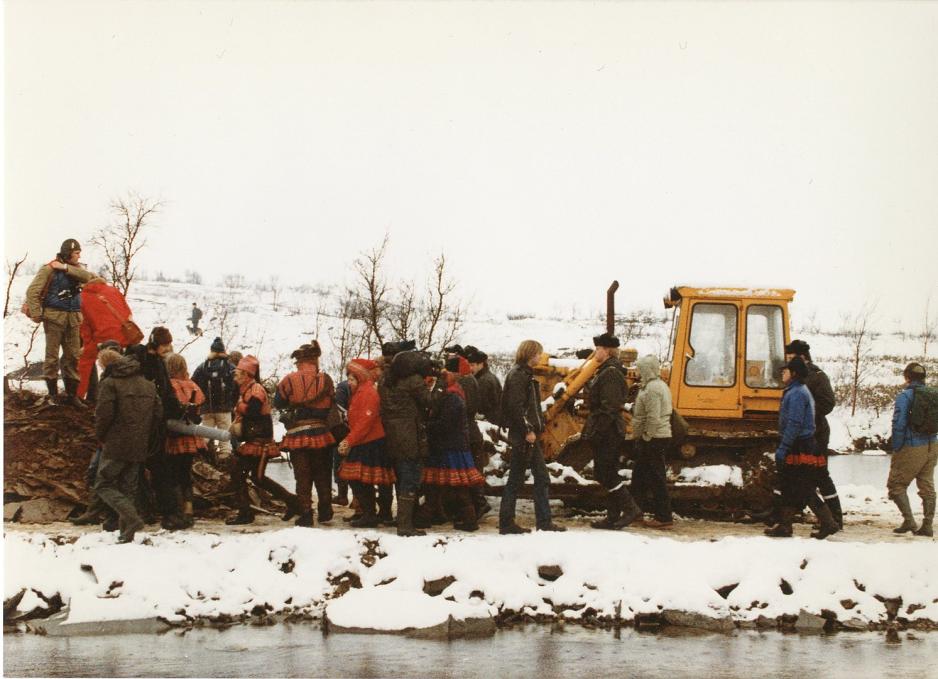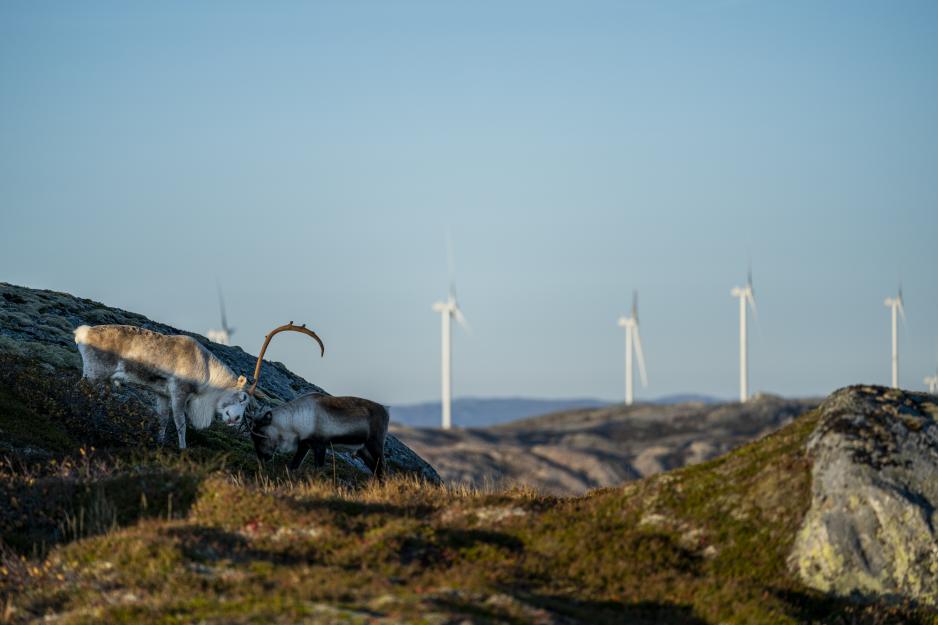Book Review: Not in My Back Yard: What Society Needs, but No-One Wants to Live Next To

Elisabeth Gammelsæter is a Senior Advisor at Sweco and former Secretary-General of the business NGO Norsk bergindustri [Norwegian Minderal Industry]. She has written the book “Ikke i mitt nabolag” – Not in My Back Yard – which highlights why NIMBY cases challenge the Norwegian democracy. (Archive photo: Linda Storholm)
“We want mobile phones, but no mines. We want electricity, but not to live next to windmills. We want the end product, but it should not be produced where we live”, says Elisabeth Gammelsæter. Now, she has written a book about the NIMBY phenomenon; Not in My Back Yard.
The Green Shift is an adopted policy, and it is a term permeating everything we build, establish, and operate. The climate crisis is a fact, and that means transitioning into green production for power, minerals and metals, and industry.
Green energy is produced through wind power, hydropower, solar power, geothermic energy, bioenergy, and ocean energy. It also means local materials and a certain degree of self-sufficiency in order to be less dependent on imports.
A measure whose importance has been underlined by the Ukraine war.
Not in my back yard
Herein lies the paradox; we welcome the Green Shift, yet we are unwilling to use mining to extract minerals and metals, and the windmill parks should preferably be located in places where we cannot see them.
The term even has a name; NIMBY – Not in My Back Yard.
Even though we have materials for which both we and the world are in dire need, we nevertheless chose to import from China or the Congo, and risk supporting child labor while we are at it.
Why is that so?
Survey
Elisabeth Gammelsæter is a Senior Advisor with Sweco and former Secretary-General of the business NGO Norsk bergindustry [Norwegian Mineral Industry]. She has written the book “Not in my back yard”, a book that highlights why NIMBY cases challenge the Norwegian democracy.
The book runs through examples of cases that are typically “unpopular, yet necessary”. Examples include the Mardøla and Alta cases in the 1970s, mining in indigenous people’s areas, as well as sea deposits. Gammelsæter writes about the so-called “monster masts” in Hardanger on the Norwegian west coast, windmills, and city development cases often having to do with densification.
So, what does the NIMBY issue look like when applied in Norway?
“It is about our wanting mobile phones, but not mines. We want power, but not to live next to windmills. We want the end product, but we do not want it produced where we live. The book is an attempt to systematically map Norwegian experiences, from Alta and Mardøla in the 1970s and up until the current debate around the use of windmills and sea deposits”, Gammelsæter says to High North News.
The problem is that wind resources are located where it blows, and minerals are where they are.
“So, who should carry the disadvantage of living close to them”, Gammelsæter asks rhetorically.
It is kind of “Sure, we will aim for minerals in Norway, however…”
What drives people?
The author herself has first-hand experience with this kind of issues through her membership of the Experct Committee on Dangerous Waste in 2019. It was a note from that work that formed the core of the academic chapter in the book. Through a survey, a pattern formed.
“First of all, I wanted to find out what drives people. I myself would argue that projects can get better from critical opposition, instead of just using power to plow them through. The book also covers civil disobedience and how the individual grows into a larger unit. Like a vent that allows you to give a message, and then takes the consequences for you.”
As mentioned, the Ukraine war became a wake-up call. Both Ukraine and Russia are major raw material producers and export palladium for cars. Russia produces 40 percent of the world’s need for raw materials and is the world’s largest palladium producer.
“Also, China controls 97 percent of the world’s rare minerals. Many in the mineral debate ask why we do not let our own resources remain in the ground until we have solved the deposit problem. But from whom will we import then? Weaker states that do not have the same standards as us when it comes to both environment, climate, welfare, or security”, Gammelsæter says and reers to the Nussir mine in Finnmark, Norway as one example.
There have been plans for years to open a copper mine in Kvalsund, near the North Cape. The mine has most licenses in place, yet there are still protests against the deposit problem and also related to the affected grazing grounds for reindeer.
It is kind of like “Sure, we’ll aim for minerals in Norway, however…”, the author says.

Protesters from the Public Action Against the Alta Developent at Stilla in Alta, Northern Norway. The development was controversial ever since the plans came up in 1968. In 1979, the Public Action’s chain gang prevented work on the construction road. At its peak, there were more than 800 protestors present. In January 1981, the police prevented some 500 protestors, and the road construction could commence. (Photo: Norwegian National Archive)
Must continue living together
Gammelsæter aimed to write this book for those who find themselves exactly in such dilemmas, in order for them to manage these cases better and prevent it from becoming such entrenched conflicts.
“However, it also provides advice for those opposing such projects. Because these conflicts actually pass and after a couple of years people are to continue living together in small communities.”
The author has also had decisionmakers in mind, along with engaged citizens who want to know more about society’s mechanisms.
Increasing polarization
What are the consequences if the NIMBY concept gets a foothold?
“I worry about increased polarization in society. That we form our own echo chambers in which we define our opponents as idiots. I argue that we should be glad that we have trust in Norwegian society. We should cultivate that trust”, the author says.
Everyone has a relationship to wind power and mines
Like many others, she was surprised to find out that there was a term for this, and that it can be applied to all processes in which there is a desire to develop something.
“Everyone has a relationship to wind power and mines. That also goes for densification of urban neighborhoods and soil used to grow food”, Gammelsæter says.
Indigenous perspective
What challenges did you face when writing the book?
“It was hard to write about the indigenous people’s perspectives. In particular as a debutant author. I guess the conclusion is that we have to solve this together, as a society. Even Norwegian politicians say they find this challenging, and that that is why we do not have a separate indigenous people allocation (a tax going straight to the Sami parliament, journ.note).
Gammelsæter points to the conflicts at Fosen in Trøndelag, Central Norway as an example. Two wind power plants were found by an unanimous Supreme Court in the fall of 2021 to be in violation of the rights of two reindeer herding communities.

The development of the wind power plants at Storheia and Haraheia on the Fosen Peninsula in Trøndelag, Central Norway violate reindeer-herding Sami communities’ right to exercise their culture pursuant to the UN’s Convention on Civilian and Political Rights, article 27, according to a Norwegian Supreme Court ruling in October 2021. (Photo of Storheia Wind Park: Fosen vind)
“Developers have to relate to such a ruling, yet indigenous people also need minerals and power. They use snowmobiles, metals for their silver brooches, and of course electricity. Norwegian authorities have to relate to this too. So, who is right?”, the author asks.
Shortage on raw materials
She points to reindeer herding operators who live by eternity principles and follow seasons. While a mining project is about timing, prices, and markets.
So, what is the solution to the NIMBY problem when everyone needs what no one wants to see? When people demand the power cables be put down in the neighboring town and for mines to be opened in other places than where geography has located it, and that houses be built on a different plot somewhere else in the city?
In her book Gammelsæter mentions a.o. shortage on raw materials that can lead to some value chains breaking down.
Yet most important of all; people are to live together afterwards too, development or no development. At the end of her book, the author therefore lists some bullet points that she considers the most important ones:
Early involvement, clear communication, respect for the decision, non-violence, good guidance from authorities, transparency for the companies, good impact assessments, respecting others’ views, objectivity in social media, input from the opponents.
“Yet the book is also for the engaged citizen and reader who wants to learn more about this phenomenon, he or she will also enjoy it”, Elisabeth Gammelsæter says in closing.





